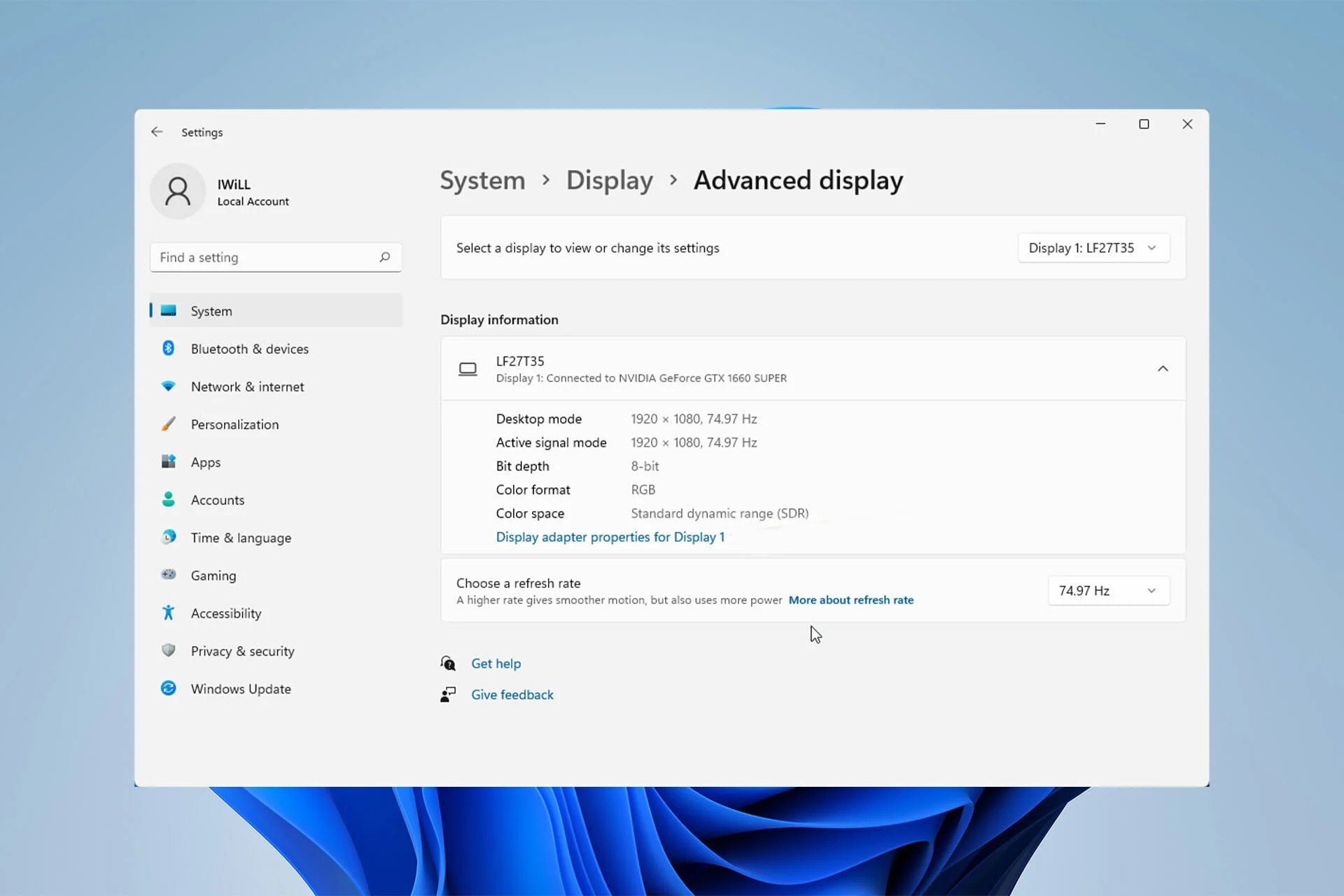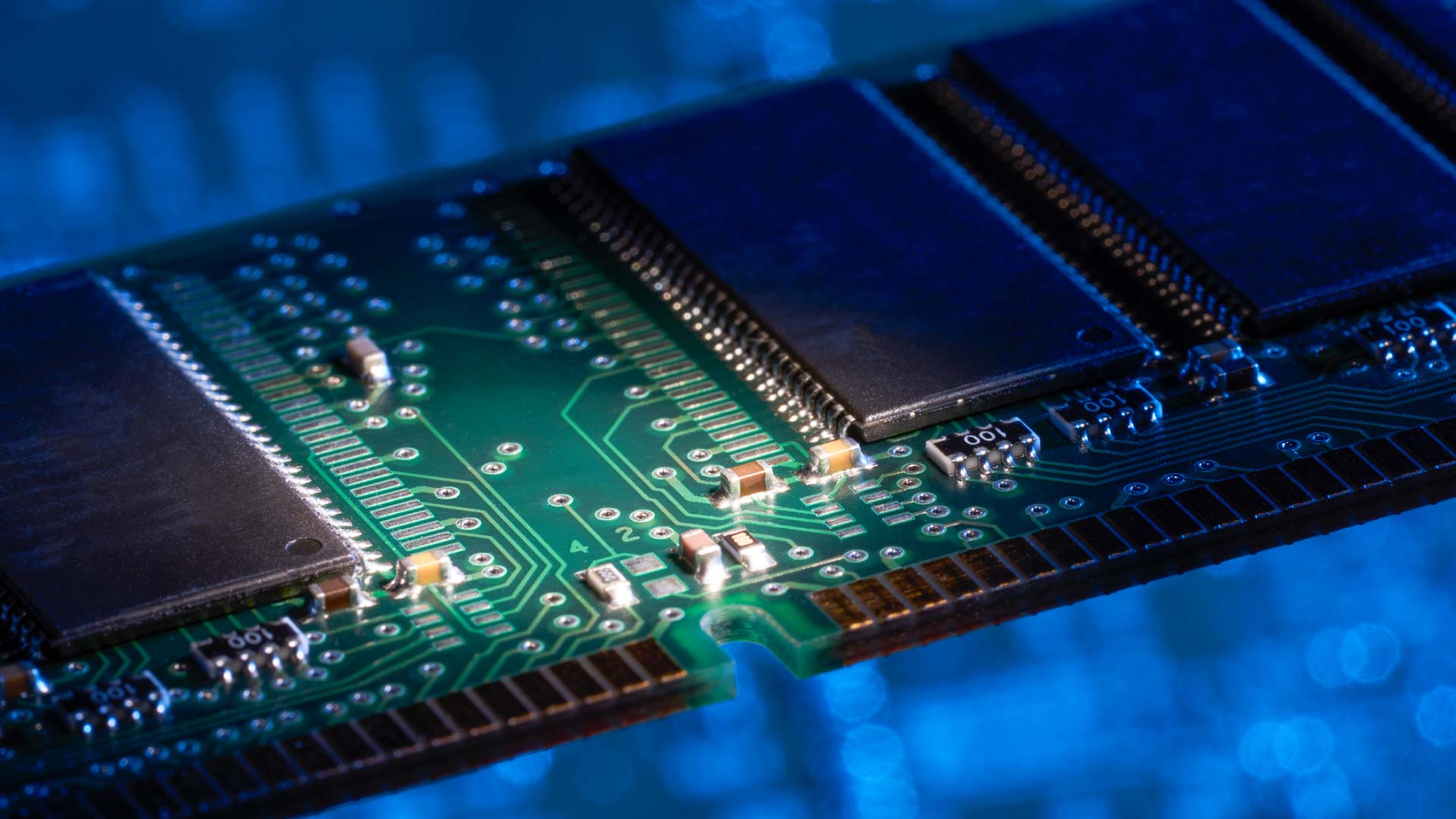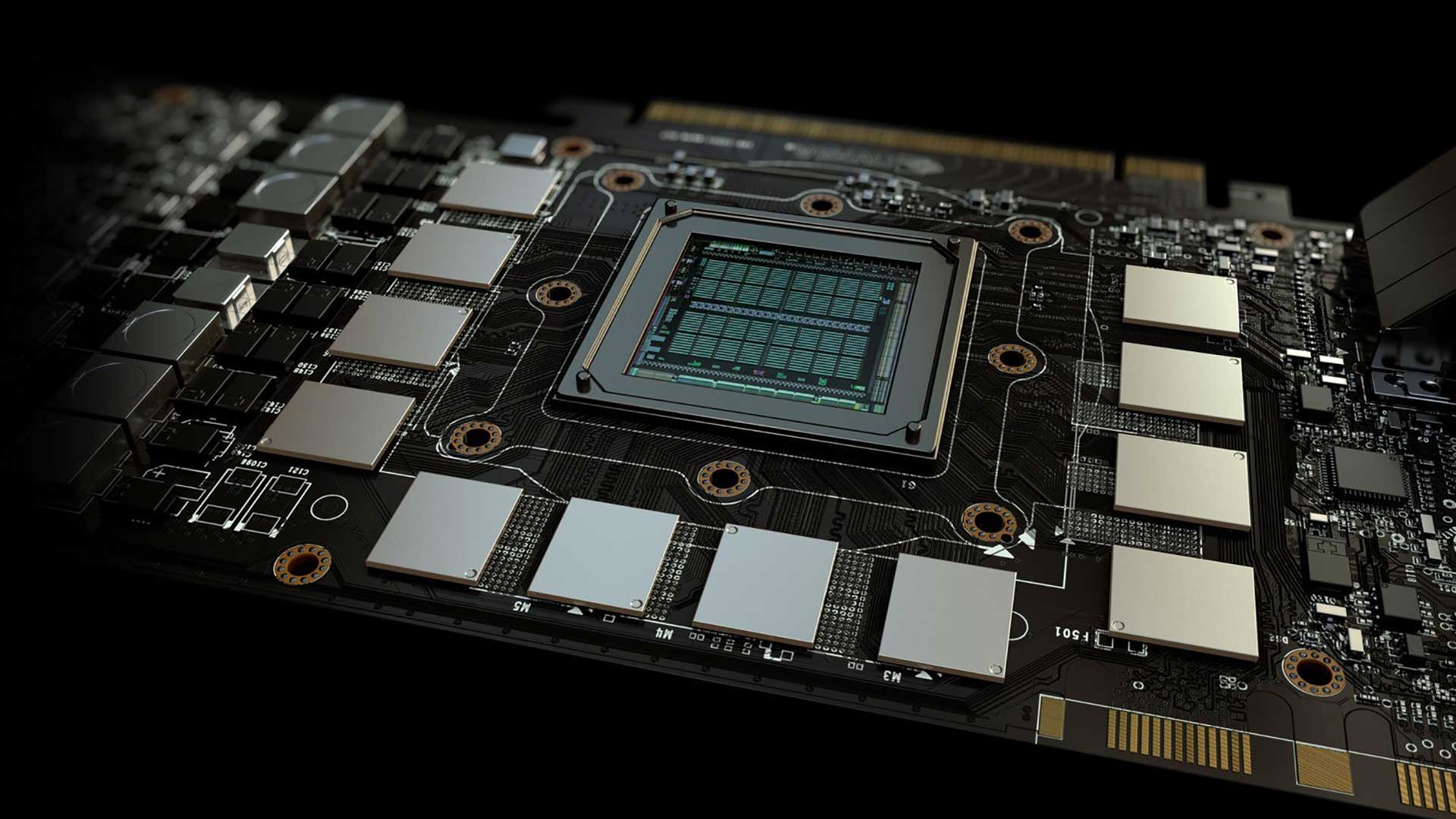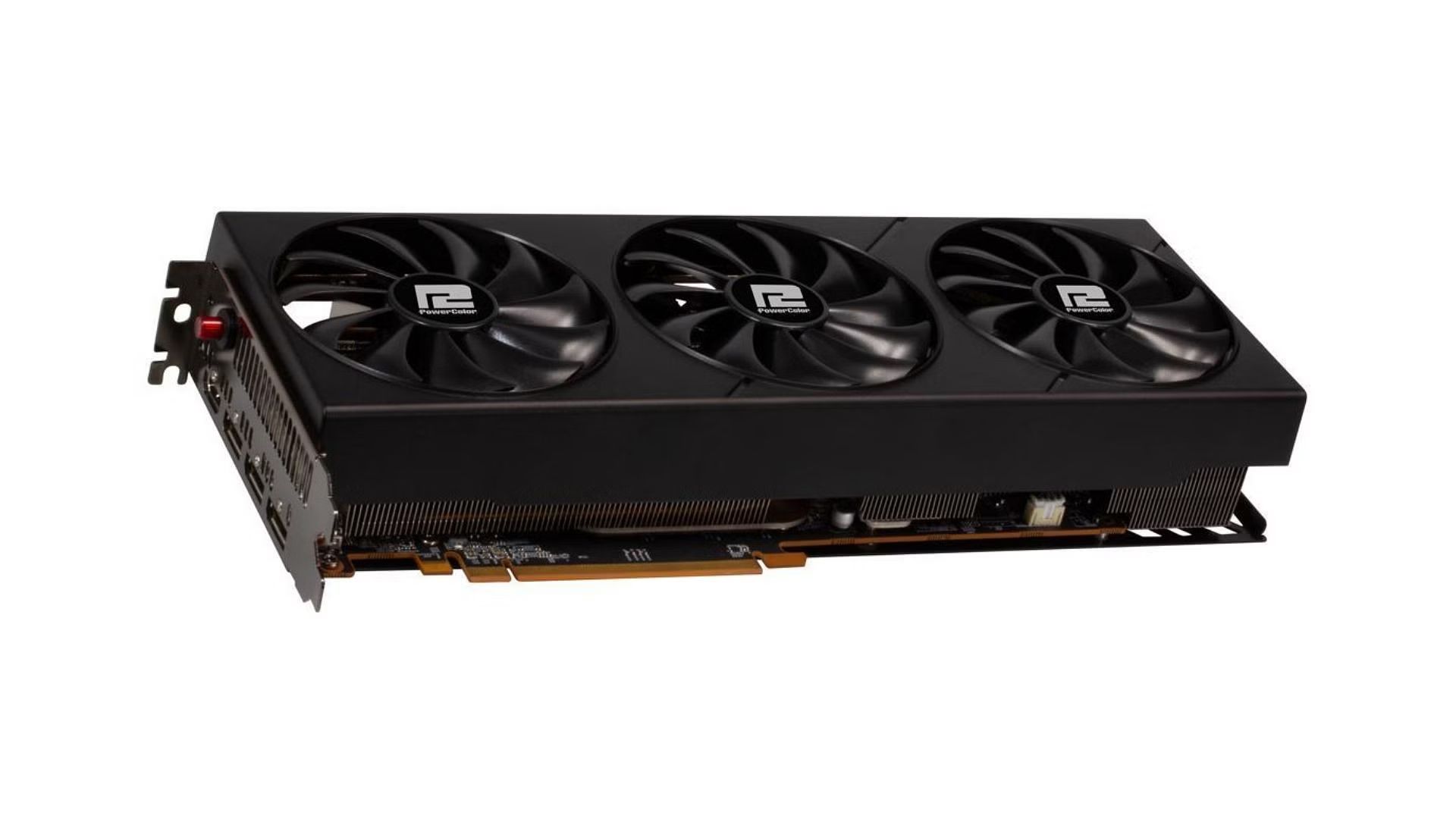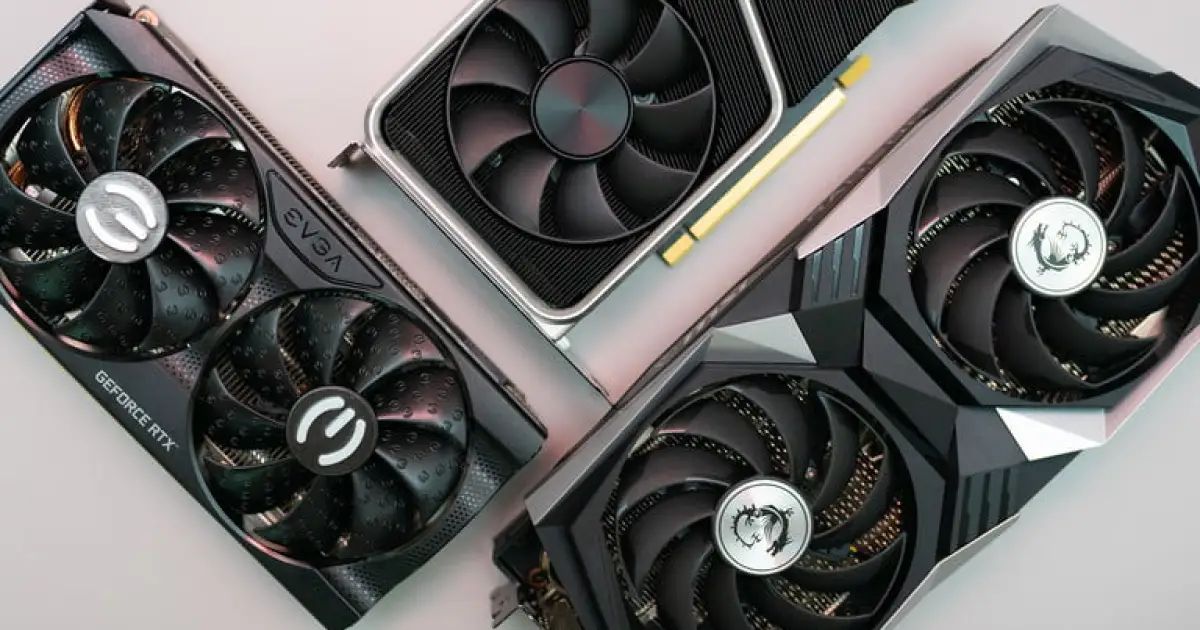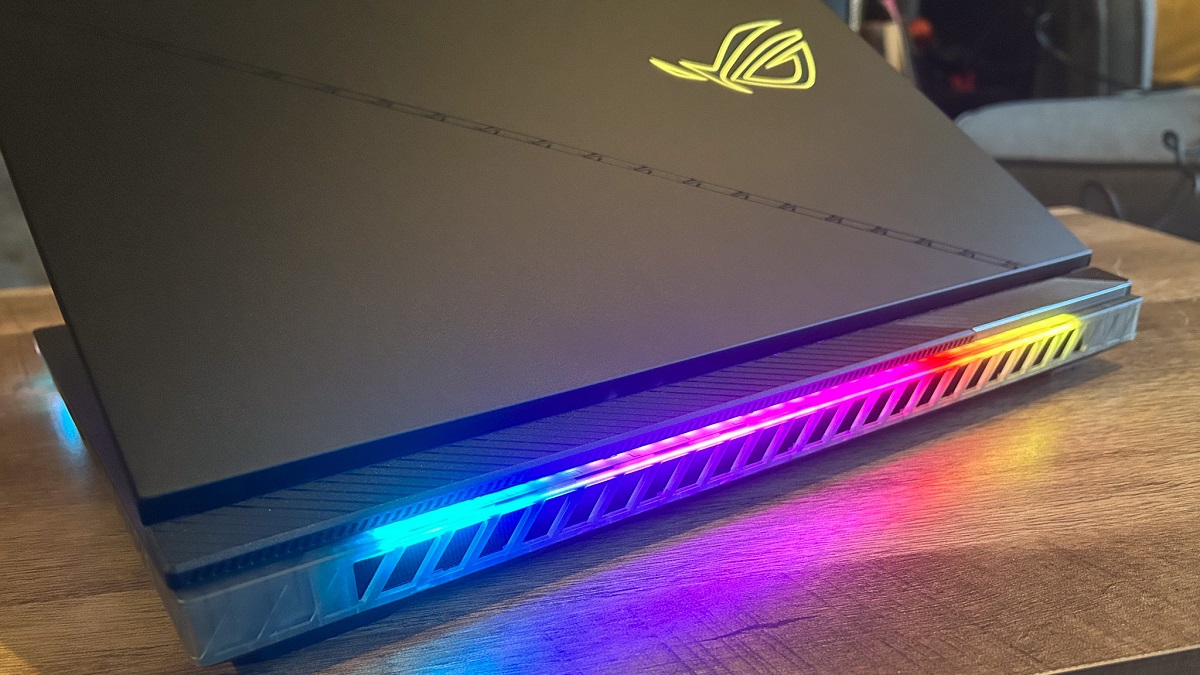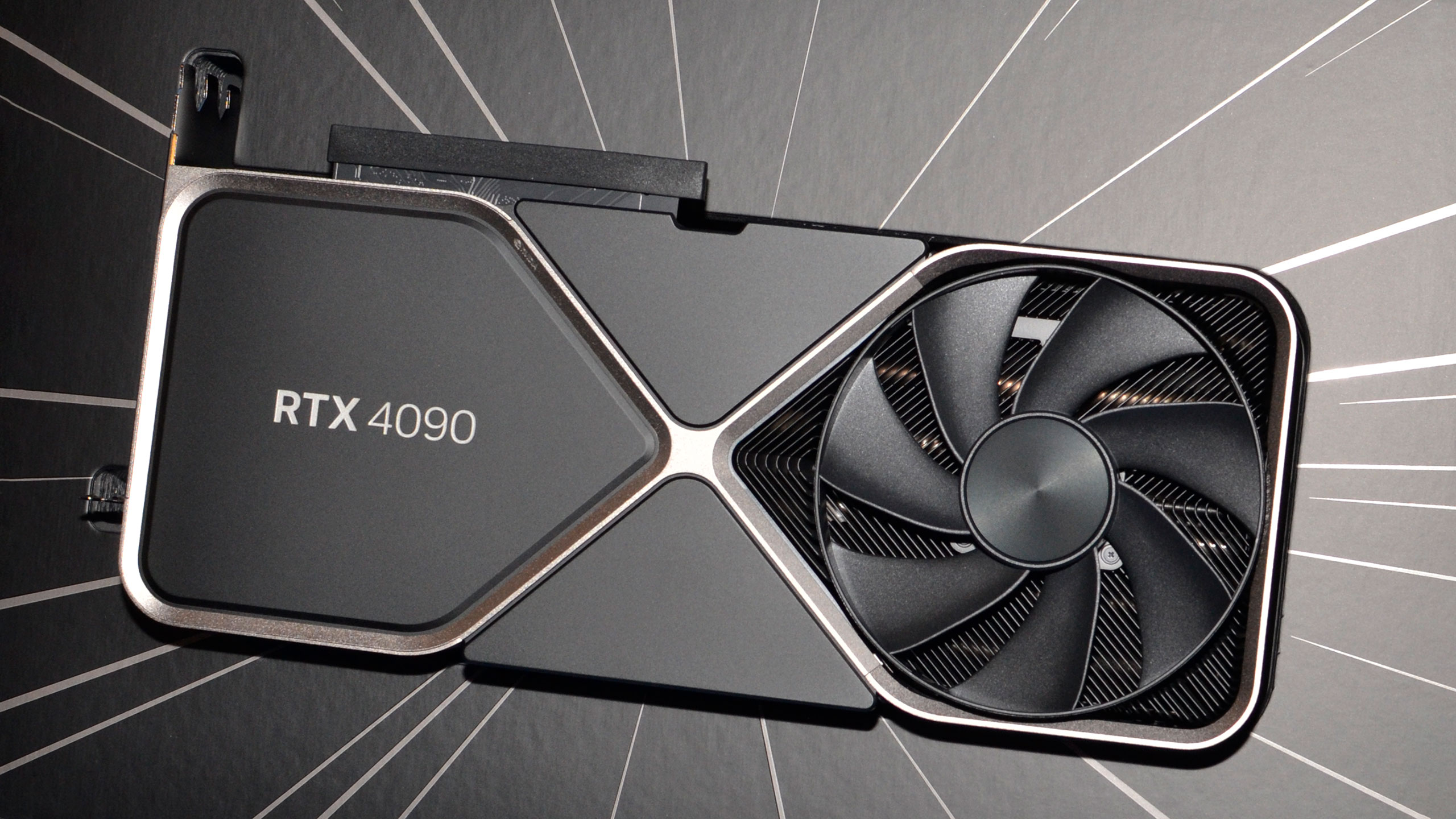Introduction
Welcome to the world of graphics cards, where advanced technology meets stunning visuals. Whether you’re a gamer, a graphic designer, or someone who simply appreciates high-quality images, understanding the importance of GB (gigabytes) in a graphics card is crucial. In this article, we will explore what GB on a graphics card means, why it matters, and how to determine the right GB for your needs.
Graphics cards are a vital component in any computer system, responsible for rendering and displaying images, videos, and animations. They allow your computer to handle complex visual tasks efficiently, ensuring smooth gameplay, crisp visuals, and speedy video editing.
So, what exactly does GB refer to when talking about graphics cards? GB represents the amount of dedicated video memory (VRAM) a graphics card has. This memory is separate from your computer’s main system memory (RAM) and is specifically designed for handling graphics-intensive tasks.
The amount of VRAM available on a graphics card plays a vital role in determining its performance and ability to handle demanding tasks. More GB generally translates to better performance, as it allows the graphics card to store and access large amounts of data quickly.
However, it’s essential to understand that the GB on a graphics card is not the sole factor that determines its performance. Other aspects, such as the GPU (graphics processing unit), clock speed, and memory bandwidth, also influence the overall performance.
Now that we have a basic understanding of what GB refers to, let’s delve deeper into the importance of GB in a graphics card and what factors you need to consider when determining the appropriate amount of GB for your specific needs.
What is GB on a Graphics Card?
When it comes to graphics cards, GB stands for gigabytes. Specifically, it refers to the amount of dedicated video memory (VRAM) that a graphics card has. This VRAM is responsible for storing and accessing the data necessary to render and display images, videos, and animations on your screen with speed and precision.
Think of GB as the storage capacity of your graphics card, just like the storage capacity of a hard drive or solid-state drive (SSD) in your computer. The more GB a graphics card has, the more data it can store and access at any given time.
The VRAM on a graphics card is different from your computer’s main system memory (RAM). While the RAM handles general computing tasks and stores temporary data that your computer uses actively, the VRAM on a graphics card is dedicated solely to handling the GPU’s graphic-intensive tasks.
The amount of GB on a graphics card directly impacts its performance, especially when dealing with high-resolution images and complex 3D graphics. More GB allows the graphics card to handle larger data sets, resulting in smoother and more detailed visuals.
For example, if you’re a gamer, a graphics card with a higher GB capacity allows for the seamless rendering of detailed textures, realistic lighting effects, and high-resolution environments. This ensures that your games run smoothly, without any lag or stuttering, providing an immersive gaming experience.
Similarly, if you’re a graphic designer or video editor, a graphics card with ample GB is crucial for handling large files, complex visual effects, and rendering high-quality videos. It enables you to work efficiently without experiencing slow rendering times or compromising on image quality.
However, it’s important to note that more GB doesn’t always mean better performance. The overall performance of a graphics card depends on several factors, including the GPU architecture, clock speed, memory type, and memory bandwidth. These elements work together to determine the card’s capability for handling graphics-intensive tasks.
Now that we understand the significance of GB on a graphics card, let’s explore why it is essential and how it impacts the card’s overall performance.
The Importance of GB in a Graphics Card
The amount of GB in a graphics card is a crucial factor that directly impacts its performance and capabilities. It determines how much data the card can store and access, which ultimately affects the quality and smoothness of the graphics it produces.
One of the primary advantages of having a graphics card with ample GB is its ability to handle high-resolution graphics and complex 3D models. When gaming or working on graphic-intensive tasks, a higher GB capacity allows for the rendering of detailed textures, realistic lighting effects, and intricate environments. This results in a visually stunning experience without any noticeable lag or stuttering.
In addition to gaming, GB plays a significant role in other graphic-intensive applications, such as graphic design and video editing. These tasks require the processing of large files, complex visual effects, and rendering high-quality videos. With a graphics card equipped with sufficient GB, designers and editors can work efficiently without experiencing slow performance or compromising on image quality.
Another important aspect of GB in a graphics card is its ability to support multi-monitor setups. If you’re planning to connect multiple monitors to your system, having a graphics card with higher GB ensures smooth performance across all displays. Each monitor requires VRAM to render the images and content displayed on the screen, so having more GB allows for seamless multitasking and improved productivity.
Furthermore, a graphics card with more GB can handle future upgrades and advancements in graphics technology. As games and applications become more demanding in terms of graphics requirements, having a higher GB capacity ensures that your graphics card can keep up with the evolving demands. This future-proofing helps extend the lifespan of your system without the need for immediate upgrades.
However, it’s essential to mention that the importance of GB should be considered alongside other factors that influence graphics card performance. Clock speed, memory bandwidth, GPU architecture, and other technical specifications also play a role in determining how well a graphics card performs. Therefore, it’s crucial to evaluate the overall capabilities of a graphics card before making a decision solely based on GB.
Now that we understand the significance of GB in a graphics card, let’s move on to the next section, where we will explore how to determine the appropriate amount of GB for your specific needs.
How Many GB Do You Need in a Graphics Card?
Determining the appropriate amount of GB required in a graphics card depends on several factors, including your specific needs and the tasks you will be performing. While there is no one-size-fits-all answer, considering certain considerations will help you make an informed decision.
For casual gamers or individuals who primarily use their computers for everyday tasks, such as web browsing and document editing, a graphics card with 2GB to 4GB of VRAM should suffice. This capacity allows for basic gaming and ensures a smooth visual experience for most applications.
If you’re a more serious gamer or engage in graphic-intensive activities like 3D modeling or video editing, consider opting for a graphics card with 6GB to 8GB of VRAM. This range provides enough power to handle modern games at higher resolutions and graphic settings, as well as processing larger files and rendering complex visual effects.
For professional designers, architects, or individuals working with advanced 3D rendering software, a graphics card with 8GB or more of VRAM is recommended. These tasks require significant computational power and memory to handle large datasets and complex graphical calculations efficiently.
It’s also important to consider your monitor’s resolution when determining the appropriate amount of GB for your graphics card. Higher-resolution displays, such as 1440p or 4K monitors, require more VRAM to render the increased number of pixels. As a general guideline, consider adding 1-2GB of VRAM for each additional monitor or higher resolution you plan to use.
Future-proofing is another crucial factor to consider when deciding on the GB capacity of your graphics card. While your current needs may be adequately met with a certain amount of VRAM, it’s worth considering how the demands of applications and games may increase over time. By opting for a graphics card with a higher GB capacity, you can ensure that it will continue to provide satisfactory performance as technology advances.
Lastly, take into account your budget constraints. Graphics cards with larger amounts of VRAM tend to be more expensive. It’s important to strike the right balance between your needs and your budget to find a graphics card that offers an adequate GB capacity without breaking the bank.
By considering the tasks you’ll be performing, your monitor’s resolution, future-proofing, and your budget, you can determine how many GB of VRAM you need in a graphics card that will meet your specific requirements.
In the next section, we’ll delve into some additional factors to consider when determining the GB for a graphics card.
Factors to Consider When Determining the GB for a Graphics Card
Deciding on the appropriate amount of GB for a graphics card involves considering various factors that impact its performance and compatibility with your specific needs. Here are some key factors to keep in mind when determining the GB capacity for your graphics card:
1. Purpose and Usage: Consider the primary purpose of your computer and the tasks you’ll be performing. Gaming, graphic design, video editing, and 3D modeling all have different VRAM requirements. Determine the level of graphics performance you need to ensure smooth and efficient operation in your desired applications.
2. Monitor Resolution: The resolution of your monitor has a significant impact on the VRAM requirements. Higher resolutions, such as 1440p or 4K, demand more VRAM to render the increased number of pixels. Ensure that the graphics card you choose has sufficient GB to handle your target resolution without compromising on performance.
3. Multi-Monitor Setup: If you plan to use multiple monitors, each additional display requires additional VRAM. Allocate extra GB to accommodate the increased pixel count and maintain optimal performance across all screens.
4. Software Requirements: Certain software applications, particularly graphic-intensive ones, may have specific VRAM recommendations or minimum requirements. Check the system requirements of the software you intend to use to ensure that your chosen graphics card meets or exceeds the recommended VRAM capacity.
5. Future-Proofing: Consider the longevity of your system and its ability to handle future advancements in software and technology. While it’s challenging to predict specific VRAM needs in the future, opting for a graphics card with slightly higher GB capacity can provide more headroom for upcoming applications and games.
6. Budget: Determine a realistic budget for your graphics card purchase. Remember that higher GB capacities often come with higher price tags. Strike a balance between your requirements and budget to find a suitable graphics card that meets your needs without exceeding your financial limits.
7. Other Specifications: Remember that VRAM capacity is not the sole determinant of a graphics card’s performance. Consider other specifications such as clock speed, memory type, memory bandwidth, and GPU architecture. These factors influence the overall capabilities and efficiency of the graphics card.
By carefully considering these factors, you can make an informed decision regarding the GB capacity of the graphics card that best suits your specific requirements. In the next section, we will explore how to determine the current GB capacity of your graphics card.
Gaming and GB: Which Graphics Card is Right for You?
When it comes to gaming, the graphics card you choose plays a significant role in determining your overall gaming experience. The right graphics card depends on several factors, including the games you play, desired resolution, and desired frame rates.
For casual gamers who enjoy playing less demanding games or older titles, a graphics card with 4GB to 6GB of VRAM should suffice. This capacity can handle most games at 1080p resolution with medium to high settings, delivering a smooth gaming experience.
However, if you’re a serious gamer or prefer more graphically demanding games, consider a graphics card with at least 8GB of VRAM or more. This higher VRAM capacity allows for higher-resolution gaming, such as 1440p or 4K, and provides headroom for graphics-intensive features like ray tracing and high texture quality.
It’s important to note that gaming demands are continually evolving, with more demanding games being released regularly. If you want your graphics card to remain relevant for a longer period, consider opting for a higher VRAM capacity. This future-proofs your system and ensures that you can enjoy upcoming game titles without any performance limitations.
Additionally, the choice of graphics card should be complemented by other considerations. These include factors like the GPU architecture, clock speeds, cooling solutions, and power requirements. These factors collectively contribute to the overall performance and efficiency of the graphics card.
It’s worth mentioning that while VRAM capacity is a crucial factor, it’s not the only metric for measuring gaming performance. The capabilities of the GPU, as well as the CPU, also influence gaming performance. It’s essential to strike a balance between your system’s components to avoid bottlenecks and achieve optimal gaming performance.
Furthermore, if you plan to explore Virtual Reality (VR) gaming, consider a graphics card with even higher VRAM capacity, such as 8GB or more. VR gaming requires additional computational power and memory to render the immersive virtual environments effectively.
Finally, remember that budget is an important consideration when selecting a graphics card for gaming. Different price ranges offer various options with varying VRAM capacities and performance levels. Assess your budget and prioritize your requirements to find the best graphics card that offers the right balance between performance and cost.
In summary, choose a graphics card with a sufficient VRAM capacity based on the games you play, resolution preferences, and desired graphical settings. Assess other specifications and factor in your budget to make an informed decision.
In the next section, we’ll discuss how you can check the current VRAM capacity of your graphics card.
How to Check How Many GB Your Current Graphics Card Has
If you’re unsure about the VRAM capacity of your current graphics card, there are a few simple methods to check the amount of GB it has. Here are some ways you can determine the VRAM capacity of your graphics card:
1. Device Manager (Windows): On a Windows computer, you can use the Device Manager to check your graphics card’s VRAM capacity. Right-click on the Start button and select “Device Manager.” Expand the “Display adapters” category and double-click on your graphics card. In the new window, go to the “Adapter” tab and look for the “Dedicated Video Memory” or similar entry. This value indicates the VRAM capacity of your graphics card.
2. System Information Utility (Windows): Another method is to use the System Information utility on Windows. Press the Windows key + R to open the Run dialog box, then type “msinfo32” and hit Enter. In the System Information window, expand the “Components” category and select “Display.” Look for the “Adapter RAM” entry, which indicates the VRAM capacity of your graphics card.
3. Graphics Card Utility: Most graphics card manufacturers provide their own software utilities that allow you to monitor and manage various aspects of your graphics card, including VRAM capacity. For example, NVIDIA GeForce Experience or AMD Radeon Software. Install and open the appropriate utility for your graphics card, navigate to the settings or information section, and look for the VRAM capacity.
4. Third-Party Tools: There are also third-party software tools available that can provide detailed information about your system’s hardware, including the VRAM capacity of your graphics card. GPU-Z and Speccy are popular examples. Download and install one of these tools, launch it, and navigate to the graphics card section to view the VRAM capacity.
By using one of these methods, you can easily determine the VRAM capacity of your current graphics card. Keep in mind that the VRAM capacity may vary depending on the specific model and variant of your graphics card.
Knowing the VRAM capacity of your graphics card is essential when considering whether an upgrade is necessary to meet the requirements of newer, more demanding games or graphic-intensive tasks. It’s also useful information when comparing the capabilities of different graphics cards in the market.
In the next section, we will discuss considerations for upgrading your graphics card and choosing the right GB capacity.
Upgrading Your Graphics Card: How to Choose the Right GB
When it comes to upgrading your graphics card, choosing the right VRAM capacity is a crucial decision. The VRAM capacity directly impacts the performance and capability of the graphics card. Here are some considerations to help you choose the right GB for your upgraded graphics card:
1. Determine your needs: Assess the primary purpose for which you’re upgrading your graphics card. Are you mainly a gamer? Do you work with graphic-intensive applications like video editing or 3D modeling? Understanding your needs will guide you in selecting an appropriate GB capacity.
2. Consider your monitor: Take into account the resolution and refresh rate of your monitor. Higher resolutions and refresh rates require more VRAM to effectively render the increased number of pixels. Ensure that the GB capacity of your upgraded graphics card matches your monitor’s specifications to maintain optimal visual performance.
3. Anticipate future needs: Think about your intended usage in the future. If you plan on playing upcoming games, working with more demanding applications, or upgrading your monitor to a higher resolution, consider opting for a graphics card with a slightly higher GB capacity. This will provide more headroom and future-proof your system.
4. Allocate a budget: Determine your budget for the graphics card upgrade and balance that against your requirements. Keep in mind that higher GB capacities often come with higher price tags. Consider your budget constraints and prioritize accordingly to find the best graphics card within your financial limits.
5. Research and compare: Explore different graphics card models and their VRAM capacities. Read reviews, compare specifications, and consider the overall performance and reputation of the graphics card brands. This will help you make an informed decision based on a combination of VRAM capacity and other key factors like clock speed, power consumption, and cooling capabilities.
6. Compatibility: Ensure that the upgraded graphics card is compatible with your system’s power supply, motherboard, and available slots. Check the physical dimensions of the card, as well as the power requirements, to ensure it can be accommodated in your PC case and connected to the power supply without issues.
7. Consider other factors: Remember that VRAM capacity is not the sole determinant of a graphics card’s performance. Pay attention to other specifications such as GPU architecture, clock speeds, memory type, and memory bandwidth. These factors collectively contribute to the graphics card’s overall capabilities and efficiency.
By considering these factors, you can choose the right VRAM capacity for your upgraded graphics card, ensuring that it meets your specific needs and provides an enhanced visual experience. Once you have made your decision, proceed with the upgrade and enjoy an improved gaming or graphic-intensive workflow.
In the concluding section of this article, we will summarize the key points discussed and reiterate the importance of choosing the appropriate GB capacity for your graphics card.
Conclusion
When it comes to choosing the right GB capacity for your graphics card, there are several factors to consider. The VRAM capacity directly impacts the performance and capabilities of the graphics card, ensuring smooth visuals, efficient rendering, and optimal gaming experiences.
Understanding your specific needs, whether you’re a gamer, a graphic designer, or someone who simply appreciates high-quality visuals, is crucial in determining the appropriate GB capacity for your graphics card. Consider the tasks you’ll be performing, the resolution of your monitor, and the level of graphic intensity required in your applications.
Future-proofing is also a key consideration. By choosing a graphics card with a slightly higher GB capacity, you can ensure that it remains relevant for a longer time and can handle upcoming advancements in games and applications.
Additionally, budget considerations come into play. Finding the right balance between your requirements and your budget is important when selecting a graphics card that offers the desired GB capacity without breaking the bank.
Remember that VRAM capacity is not the only factor to consider. Other specifications like clock speed, GPU architecture, and memory bandwidth also influence the overall performance of the graphics card. Therefore, it’s important to evaluate the entire package before making a decision.
To determine the VRAM capacity of your current graphics card, you can use various methods such as checking the Device Manager, System Information utility, or utilizing third-party software tools.
Once you’ve made a decision on the GB capacity, consider compatibility with your system’s power supply, motherboard, and available slots. Additionally, conducting research and reading reviews will help you select the best graphics card model that fits your requirements and budget.
In conclusion, selecting the right GB capacity for your graphics card is essential for optimal performance, smooth gaming, and efficient graphic-intensive tasks. By considering your needs, future-proofing, budget, and other specifications, you can make an informed decision that will enhance your overall computing experience.







